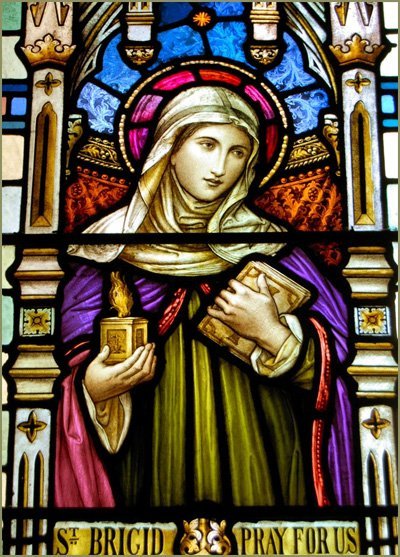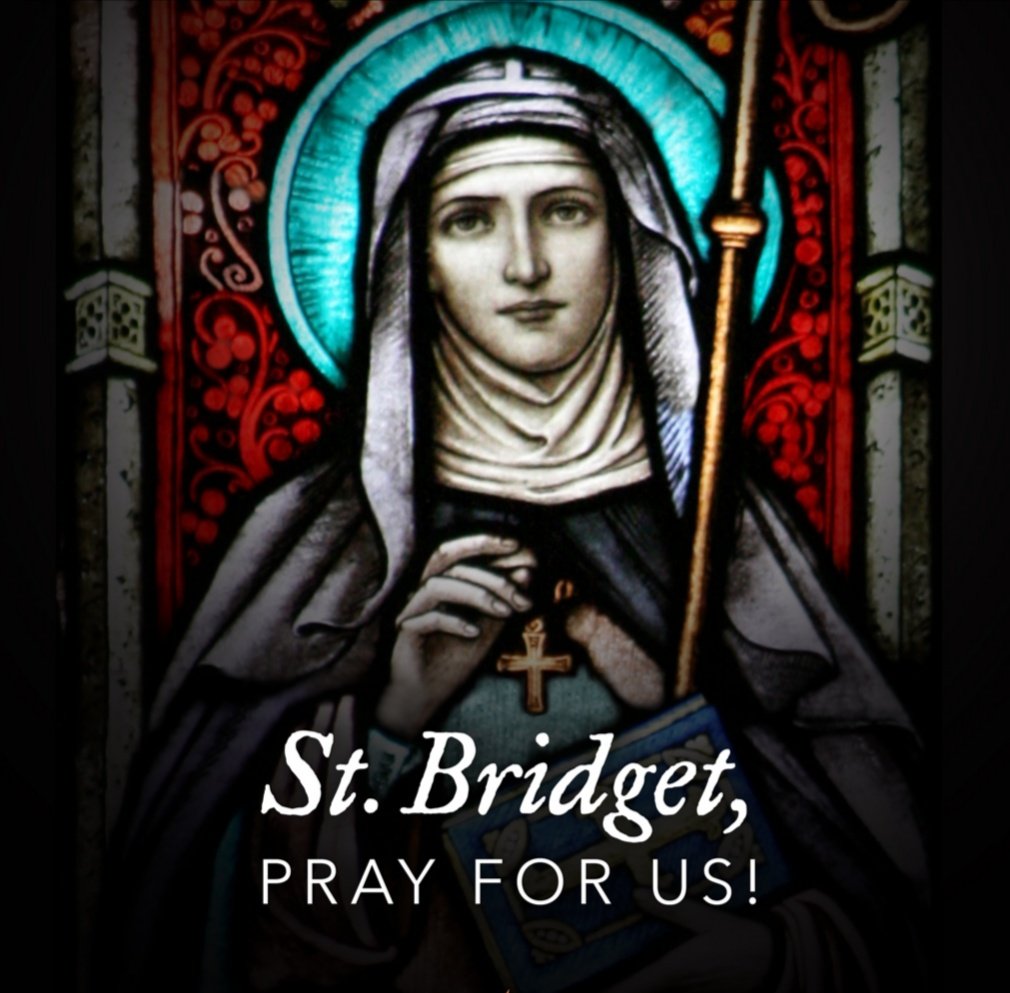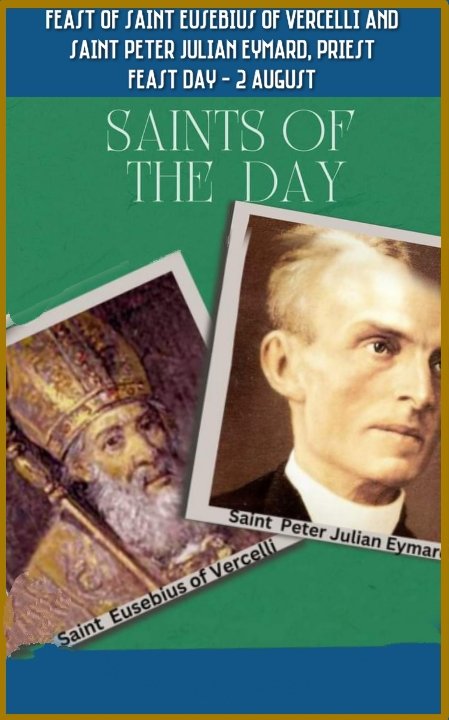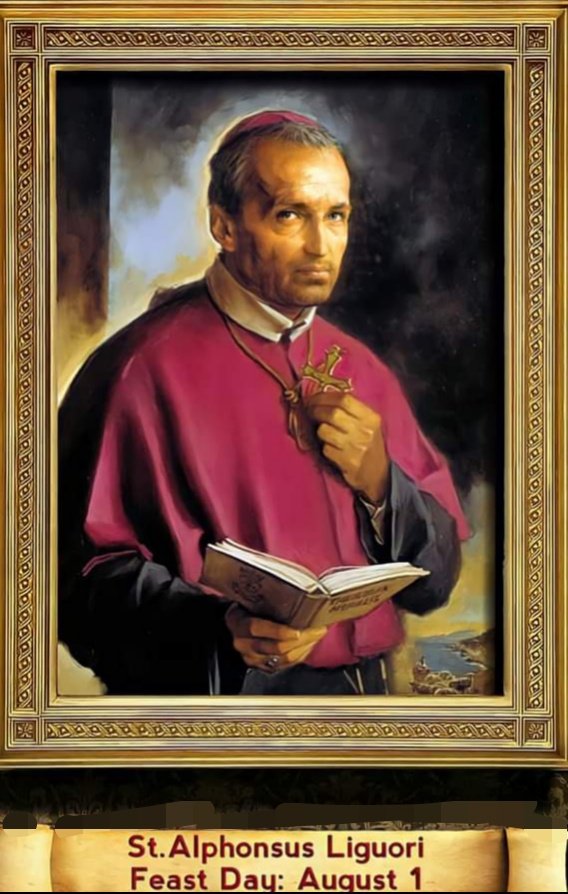FEAST OF SAINT BRIGID OF IRELAND
FEAST DAY – 1st FEBRUARY
Brigid of Ireland, c. 451 – 525, is the patroness saint (or ‘mother saint’) of Ireland, and one of its three national saints along with Patrick and Columba. According to Irish hagiographies, she was an abbess who founded several convents of nuns, most notably that of Kildare, which was one of the most important in Ireland. She was born of a noble father, Dubhthach, and a slave mother Brocca, and was sold along with her mother to a Druid, whom she later converted to Christianity. On being set free, she returned to her father, who tried to marry her to the king of Ulster.
Impressed by her piety, the king removed her from parental control. As she grew older, Brigid was said to have performed miracles, including healing and feeding the poor. According to one tale, as a child, she once gave away her mother’s entire store of butter. The butter was then replenished in answer to Brigid’s prayers. Around the age of ten, she was returned as a household servant to her father, where her habit of charity led her to donate his belongings to anyone who asked.
In both of the earliest biographies, Dubhthach is portrayed as having been so annoyed with Brigid that he took her in a chariot to the King of Leinster to sell her. While Dubhthach was talking to the king, Brigid gave away his bejewelled sword to a beggar to barter it for food to feed his family. The king recognised her holiness and convinced Dubhthach to grant his daughter freedom. According to the Liber hymnorum (11th century), the Curragh, a plain in Kildare, was granted by the king of Leinster to St. Brigid, where she founded the first nunnery in Ireland.
The community became a double abbey for monks and nuns, with the abbess ranking above the abbot. Brigid, with an initial group of seven companions, is credited with organising communal consecrated religious life for women in Ireland. She invited Conleth, a hermit from Old Connell near Newbridge, to help her in Kildare as pastor of them. It has often been said that she gave canonical jurisdiction to Conleth, Bishop of Kildare, but Archbishop Healy says that she simply “selected the person to whom the Church gave this jurisdiction”, and her biographer tells us that she chose Saint Conleth “to govern the church along with herself”.
For centuries, Kildare was ruled by a double line of abbot-bishops and of abbesses, the Abbess of Kildare being regarded as superior general of the monasteries in Ireland. Her successors have always been accorded episcopal honour. Brigid’s oratory at Kildare became a centre of religion and learning, and developed into a cathedral city. She is credited with founding a school of art, including metalwork and illumination, which Conleth oversaw. The Kildare scriptorium made the Book of Kildare, which drew high praise from Gerald of Wales (Giraldus Cambrensis), but disappeared during the Reformation.
One of the more commonly told stories is of Brigid asking the King of Leinster for land for a convent. The king refused, but Brigid prayed and asked God to soften the king’s heart. She told four of her sisters to take up her cloak, but instead of laying it flat on the turf, each sister, with face turned to a different point of the compass, began to run swiftly, the cloth growing in all directions. The cloak began to cover many acres of land. The alarmed king consented and granted her the land, becoming a Christian, helping the poor, and commissioning the building of the convent.
She is associated with the preservation of a nun’s chastity in unusual conditions. One of the loveliest and most gently profound legends of Brigid is the story of Dara, the blind nun, for the restoration of whose sight Brigid prayed. When the miracle was granted, Dara realized that the clarity of sight blurred God in the eye of the soul, whereupon she asked Brigid to return her to the beauty of darkness. Brigid is also said to have miraculously changed water into beer for a leper colony and provided enough beer for 18 churches from a single barrel.
Brigid is said to have been given the last rites by Saint Ninnidh of the Pure Hand when she was dying. Afterward, he reportedly had his right hand encased in metal so that it would never be defiled, and became known as “Ninnidh of the Clean Hand”. Tradition says she died at Kildare on 1 February 525. Brigid’s feast day is observed as far away from Ireland as Australia and New Zealand. In early times she was celebrated in parts of Scotland and England converted by Celtic churchmen.
The church of St. Bride’s, Fleet Street, London, is dedicated to her. Brigid is said to have been buried at the right of the high altar of Kildare Cathedral, and a costly tomb raised over her, adorned with gems and precious stones and crowns of gold and silver. Over the years her shrine became an object of veneration for pilgrims, especially on her feast day, 1 February. About the year 878, owing to the Scandinavian raids, Brigid’s purported relics were taken to Downpatrick and reburied in the tomb of St. Patrick and St. Columba.
The relics of the three saints were discovered in 1185, and on 9 June of the following year John de Courcy had their remains solemnly transferred and reburied in Down Cathedral. Saint Brigid is patron of County Kildare, babies, blacksmiths, boatmen, brewers, cattle, chicken farmers, children whose parents are not married, children with abusive fathers, children born into abusive unions, Clan Douglas, dairymaids, dairy workers, Florida, Ireland; Leinster, Mac Brádaigh family, mariners, midwives, milkmaids, nuns, poets, poor, poultry farmers, printing presses, sailors, travelers, scholars, watermen.
PRAYER
Almighty God, you have given your people extraordinary benefits to perfect their lives to high, spiritual platforms and become role-models of emulation. Saint Brigid, a woman of peace, brought harmony wherever she dwelt, caring in absolute dedication for the poor.
May our Christian faith be revived by the great example of her life, in Jesus’ Name. Amen

Saint Brigid, you brought peace where there was conflict, light in darkness and hope to the lowly and the depressed.
May the mantle of your peace cover
those who are troubled and anxious,
and may peace be firmly rooted in our hearts. May we grow each day into greater wholeness in mind, body and spirit. Amen






